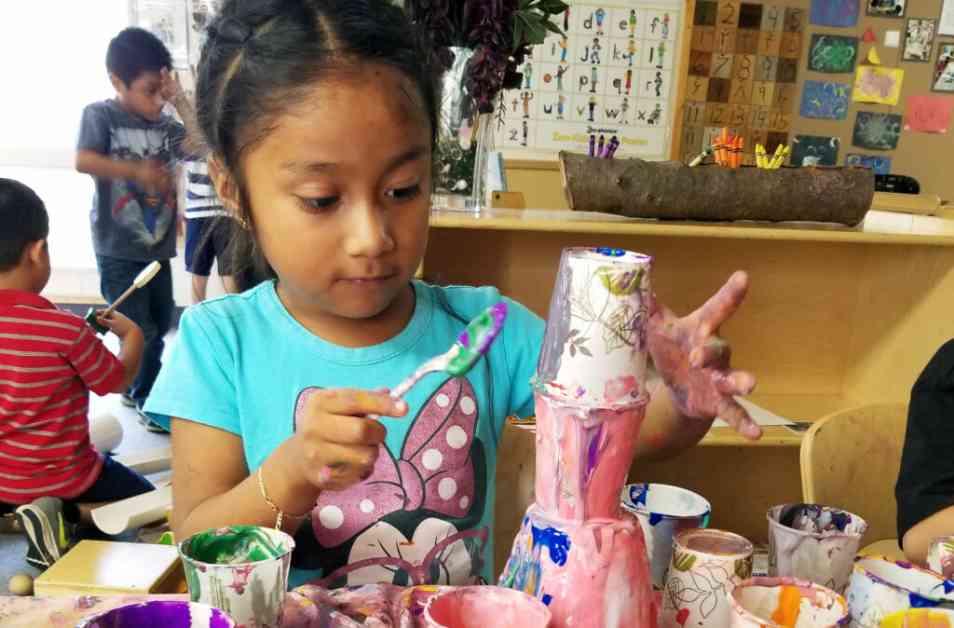Embracing Creativity in Preschool Education
In the world of preschool education, creativity plays a vital role in shaping the minds of young children. Daniel Mendoza, a veteran preschool teacher and child development specialist, exemplifies this notion through his innovative approach to teaching art to preschoolers. Mendoza’s journey into the realm of children’s art began with a simple necessity – the need to save money on art supplies. However, this practical concern soon transformed into a reflection of his artistic aesthetic and dedication to engaging young students through painting.
As a musician turned visual artist turned educator, Mendoza seamlessly integrates his passion for creativity into his teaching methodology. For him, the transition to education was a natural progression, as he views music, visual arts, and education as interconnected disciplines that require a creative mindset. His unconventional approach to teaching art, such as creating his own paintbrushes to facilitate large-scale art projects, underscores his commitment to fostering a love for creativity in preschoolers.
The Transformative Power of Art in Early Childhood Education
Mendoza firmly believes that art is intrinsic to human identity and plays a crucial role in shaping children’s outlook on the world. In his classroom, he encourages students to embrace big messes and explore their creativity without fear of making mistakes. By providing a space for children to express themselves through art, Mendoza empowers them to communicate their feelings, thoughts, and ideas in a visually compelling manner.
Children, according to Mendoza, are natural artists who thrive in a creative mindset. By nurturing their innate ability to think outside the box and focus on the process rather than the end product, educators can help children develop their artistic skills and cultivate a lifelong appreciation for creativity. Mendoza’s emphasis on the importance of art in early childhood education stems from his own experiences growing up in a low-income immigrant family, where exposure to the arts was limited but transformative.
The Intersection of Art and Academic Success
Despite the growing emphasis on numeracy and literacy in education, Mendoza advocates for the inclusion of art as a fundamental component of children’s learning experience. He highlights the benefits of art in promoting focus, attention to detail, and critical thinking skills that are essential for academic success. By integrating art with other subject areas, educators can create a holistic learning environment that nurtures children’s intellectual and creative development.
Mendoza’s dedication to promoting the arts in education is driven by his belief in the transformative power of creativity for children from all backgrounds. He emphasizes the need to provide equitable access to arts education for all students, regardless of their socioeconomic status. By instilling a sense of freedom, expression, and identity through art, educators can empower children to reach their full potential and contribute meaningfully to their communities.
In conclusion, Daniel Mendoza’s innovative approach to teaching art in preschool education serves as a testament to the profound impact of creativity on young minds. By embracing messiness, encouraging self-expression, and fostering a love for art, educators can inspire the next generation of artists, thinkers, and leaders. Through his dedication to promoting the arts in education, Mendoza embodies the transformative potential of creativity in shaping a brighter future for all children.
